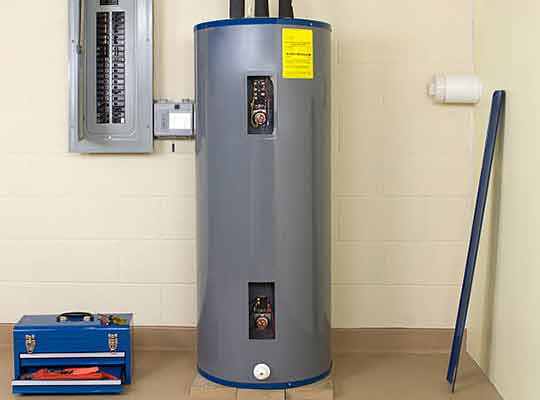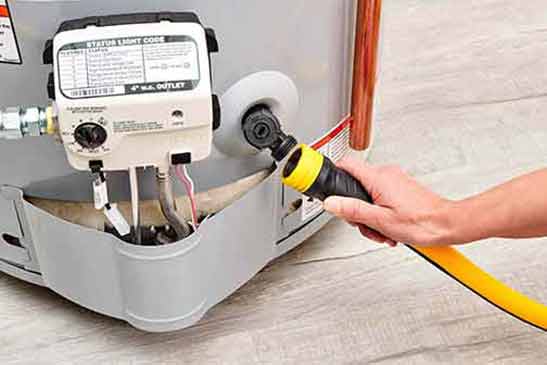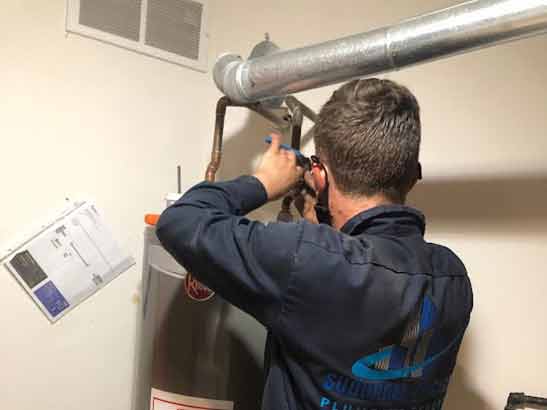
Starting from the beginning of fall, when summer starts to recede, to early spring, when we see the first signs of snow; that is when the water heater in your home sees the most use. That is also the season when the last thing you want in your home is a malfunctioning heater.
However, the increased demand for hot water at this time of the year strains your water heater. C&C Property Management say this increased pressure means there will be a bigger risk of water heater issues in your home. That is unless you do something to avert this possibility.
A malfunctioning water heater in spring or summer is a huge headache. But the trouble it causes is somewhat manageable compared to what could happen if the issue occurs in winter. A malfunctioning water heater in the dead of winter is a potentially life-threatening problem.
That is why you don’t want it to happen at all.
Water heater problems in winter are easily avoided if you start to take action in the fall rather than waiting for the onset of winter. The following fall and winter maintenance tips will help protect your home from possible water heater failure during the two seasons.
6 water heater maintenance tips for fall and winter
Before we proceed, please note that these steps are not a substitute for getting a qualified technician to inspect and service your water heater.
Insulate cold and hot water pipes
To prevent energy losses, insulate the exposed sections of water heater pipes. These include the pipe that supplies cold water to the tank and the one that carries heated water to the plumbing fixtures in your home. Insulating these pipes is as simple as enclosing them in slip-on foam pipe insulation.
Insulate the water heater tank
In addition to insulating the pipes, you will want to insulate the water heater tank to make it more efficient. Doing this will help it heat water faster while using less energy. The quickest and most affordable way to do this is with foil blankets, which you can get at any hardware store.
Set the thermostat at 120 degrees
Most manufacturers recommend that water heater thermostat settings for fall and winter be between 120 and 140 degrees. However, given that at 140 degrees, water can cause second and third-degree burns, a little above 120 degrees is safer. Below 120 degrees will encourage bacteria to grow in your water.

Drain and flush the tank
Mineral sediment inside the water heater tank will impair its ability to heat water efficiently. That will not only increase heating costs, but it can shorten the lifespan of your water heater. Draining the water heater to get rid of accumulated sediment will solve this problem.
Test the TPR Valve
The temperature and pressure relief valve is an important safety feature on your water heater. If the water temperature inside the tank gets dangerously high, the TPR valve opens automatically to release some heat and pressure. Without a functioning TPR valve, your water heater may explode if it gets too hot; that is why you want to test this valve.
Replace the anode rod
The role of the anode rod is to save the tank from rust and corrosion. It does this by attracting to itself all the ions in water that would have attacked the materials of your water heater tank. Over time, the anode rod gets corroded and loses its efficiency, thereby exposing your tank to the risk of corrosion. To protect the water heater tank, replace the used-up anode rod.

Why routine water heater maintenance is important
While it is alright to self-inspect your water heater and its connecting pipes for signs of leaks and wear, it is better to let a qualified heating and air conditioning professional do it. An expert will have the tools and experience to detect budding problems before they become major costs.
Also, you will not have to do all the fall and winter maintenance tips discussed in this post if your water heater is inspected by an expert at least once every year. That is because most of the potential issues with the system would have been found and taken care of.
Scheduled water heater inspections and servicing will do the following for your home:
- Prevent costly repairs: Most major water heater problems result from minor issues that were not treated but allowed to accumulate. Inspecting the water heater will help you uncover these problems early.
- Lower heating costs: Scheduled water heater inspections help you save money by cutting your home’s energy costs and prolonging the life of your water heater.
- Make your home safer: Exploding tanks and carbon monoxide leaks in gas-powered systems are common water heater problems. Regular inspection and servicing of the water heater will prevent these problems
To conclude, the six maintenance tips discussed in this post are the easy DIY steps homeowners can use to keep their water functioning smoothly in fall and winter. But your DIY skills are inadequate to extract the maximum value from your water heater. You need expert help.

